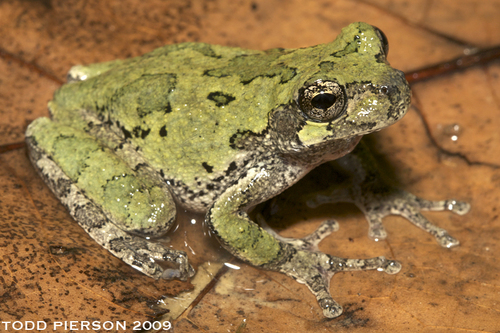
Cope's Gray Treefrog
The Cope's Gray Treefrog (Hyla chrysoscelis) dazzles with its color-changing skin, shifting from gray to green to blend with its forested habitat. Known for a unique trilling call, these frogs are resilient, enduring harsh, freezing winters, showcasing nature's remarkable adaptability.
2 years
Lifespan
Distribution Range of the Cope's Gray Treefrog
Hyla chrysoscelis, commonly known as the Cope's gray treefrog, is native to North America. Its geographical distribution spans across the United States and parts of Canada, primarily found in the eastern and central United States. The species is widespread from Texas to Florida, extending north through the central states to the Great Lakes region, and parts of southern Ontario in Canada.
Cope's Gray Treefrog's Habitat
Environmental Conditions
Cope's gray treefrog typically inhabits deciduous woodlands and pond or swamp edges, often in areas with a combination of trees and shrubby vegetation. This species is arboreal and highly adapted to moist environments, particularly those that provide temporary water bodies for breeding. They thrive in a moderate climate, with warm and humid summers, and are well adapted to seasonal variations.
Ecological Niche
Hyla chrysoscelis occupies an ecological niche as an insectivore, playing a key role in controlling insect populations within its habitat. It is a crucial part of the food web, serving as both predator and prey, with its vocal mating calls contributing to communication within the ecosystem. During the breeding season, temporary water bodies such as vernal pools and flooded areas are essential for its reproductive cycle.
Copyright @ Nature Style Limited. All Rights Reserved.
 English
English